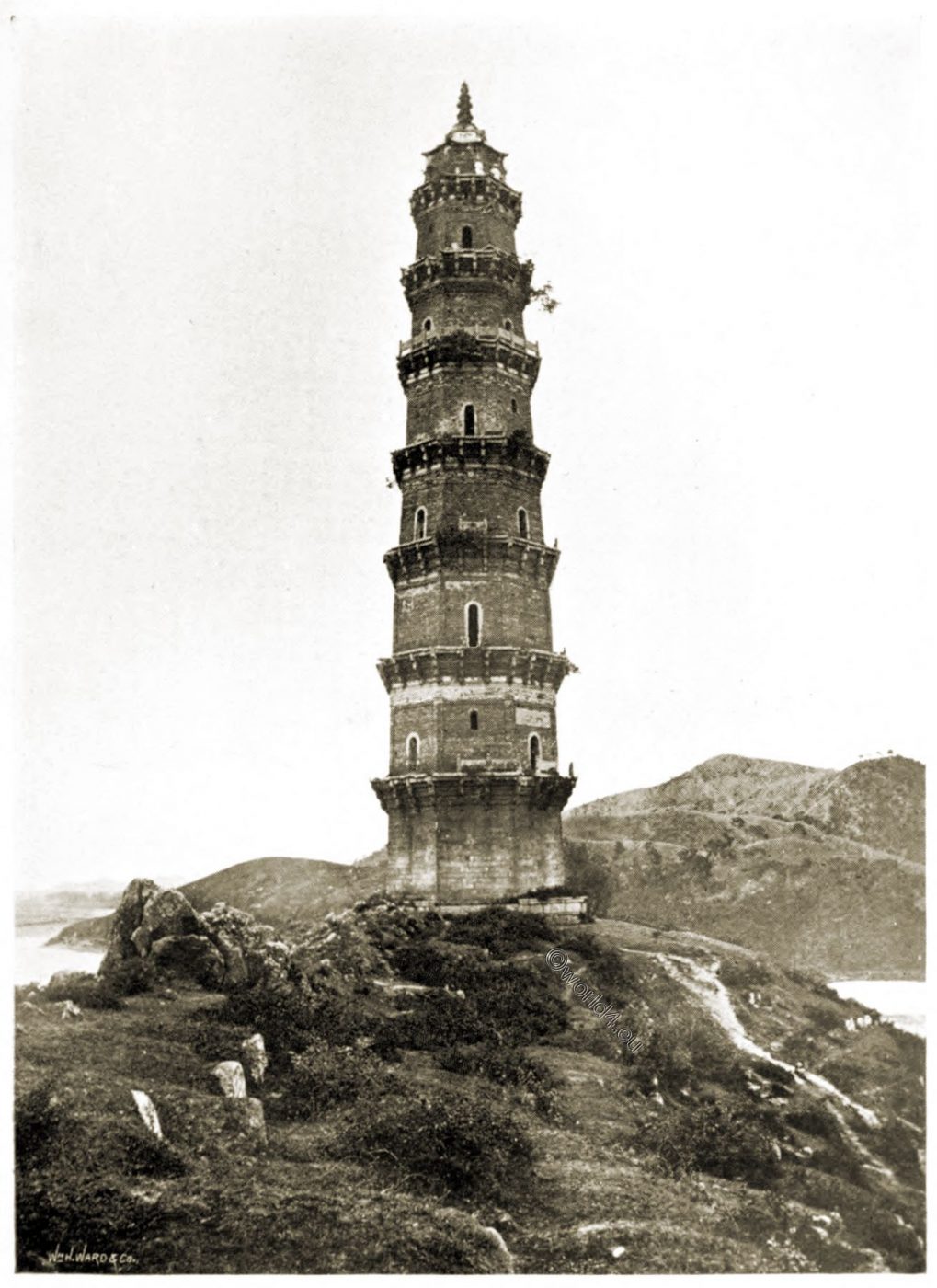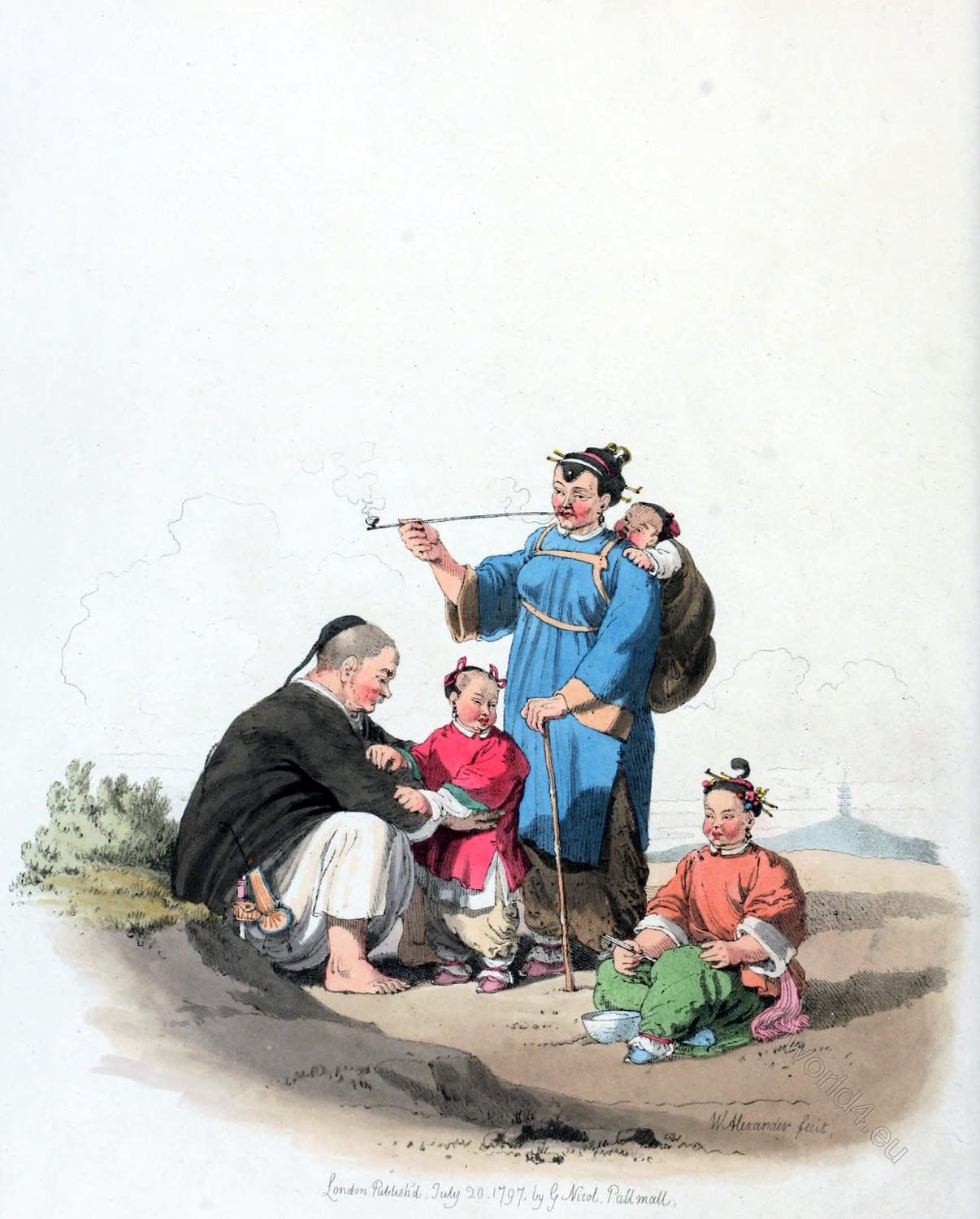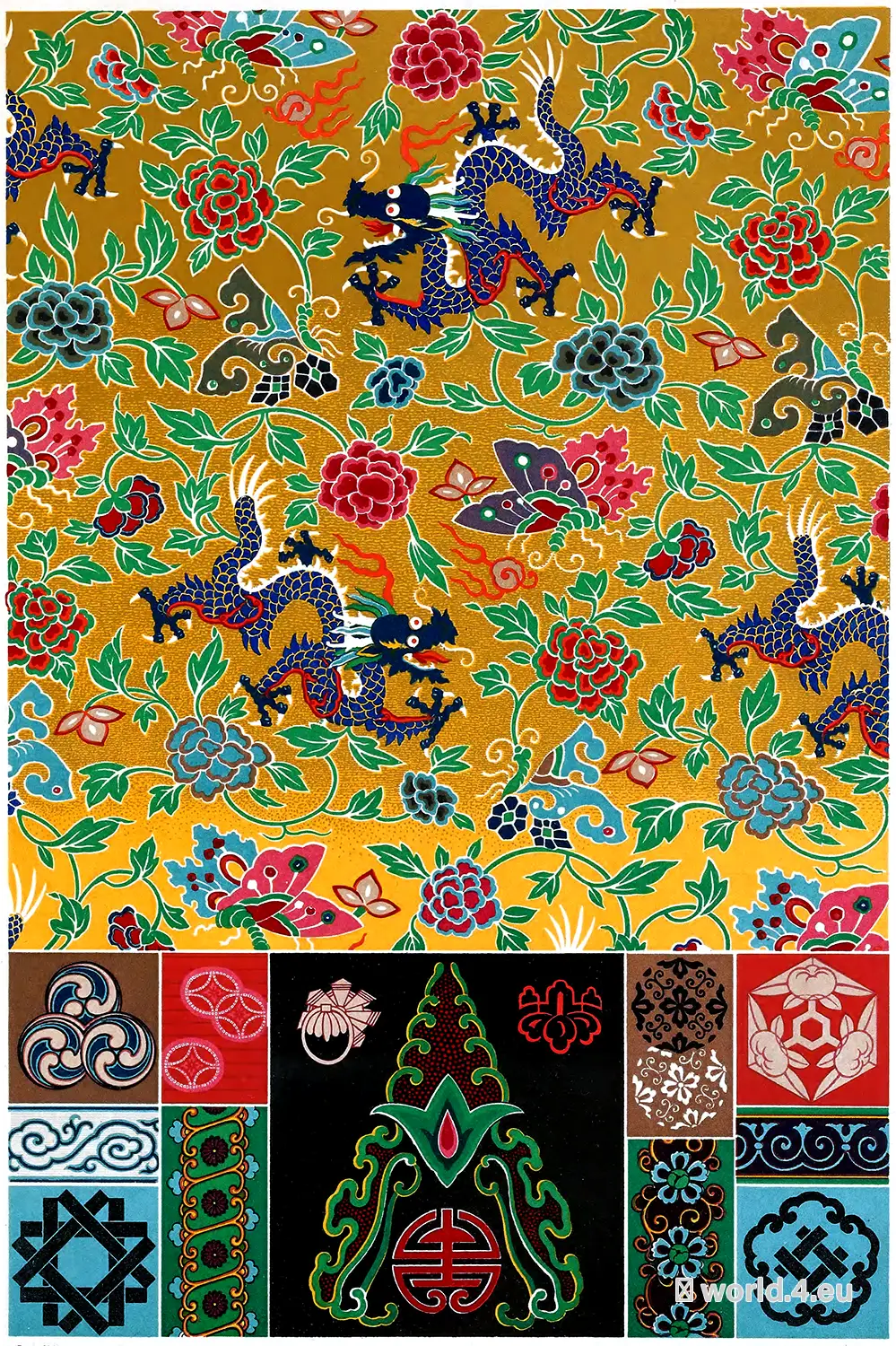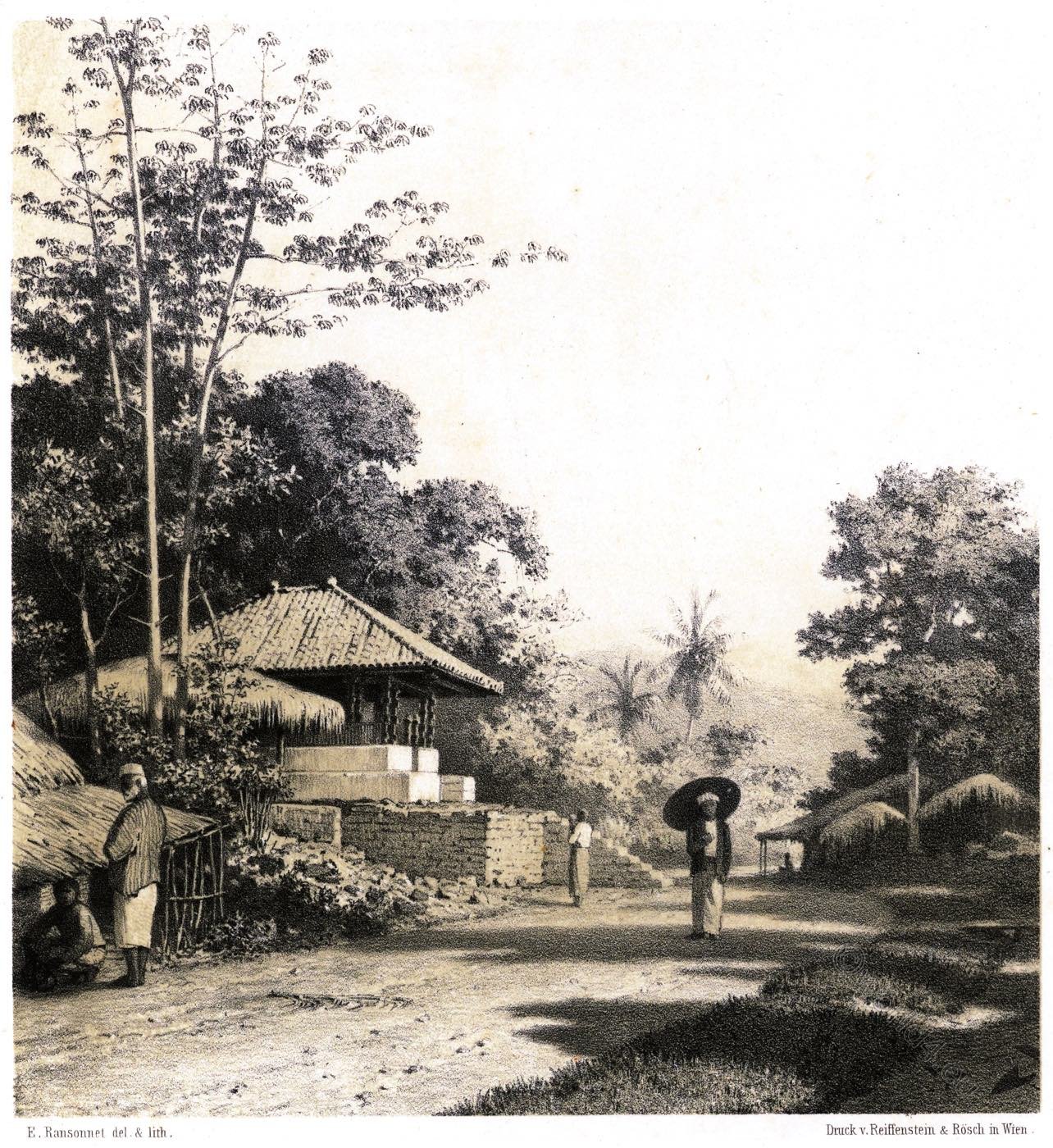
A PAGODA IN SOUTHERN CHINA.
Chinese Pagoda, Kwangtung Province.
Kwangtung also Guangdong (Chinese 廣東省 / 广东省, Pinyin Guǎngdōng Shěng) lies on the coast of the South China Sea and is bordered in the north by the Nanling Mountains. To the west is the Leizhou Peninsula, with Hainan Island at the southern tip. The neighbouring provinces are Fujian, Guangxi, Hainan (belonged to Guangdong until 1988), Hunan, Jiangxi as well as the special administrative zones Hong Kong and Macau. The latter cities also belong to the historical cultural area of Guangdong, but the younger administrative division is a direct consequence of colonialism.
THIS picture presents a type of the numberless pagodas which are scattered over the south of China.
The one shown here stands on the right bank of the Han river, near Chao-chow-fu, and, like all the best examples of such edifices, the whole ground structure up to the first story is composed of stone. Within, a winding staircase gives access to the seven stories of which, as may be noticed, the tower is made up, and at each story there is an inner flooring or platform to correspond with the terraces outside. These terraces were originally surrounded by massive stone balustrading, resting on solid ornamental brackets of the same material.
The balustrades have in many places been broken away. but what still remains is sufficient to show the beauty and skill with which the stone slabs are dove-tailed into the uprights of the balustrade. It may be computed from the figures shown in the upper terrace that the height of the structure is about 200 feet.

This pagoda of course commands an extensive view of the river and the country around, suggesting the idea that such edifices were originally intended as watch-towers, whence the advance of an enemy could be readily discerned. This theory is corroborated by the circumstance that pagodas are much more numerous in those parts of Southern China which have been subject to invasion, and whose history, from the earliest times, is a record of warfare and strife. The positions in which these pagodas were built also seem to indicate that they were intended to serve as beacons and watch-towers, for they almost invariably are found to occupy some commanding height close to the banks of a stream.
They are on all hands admitted to have been reared as monuments during the early history of Buddhism in China, and I contend that the promoters of the new faith must have profited by their hard experiences when driven out of India, and shown determination to guard their faith and the relics of Gotama from surprise in a new country. Pagodas appear to be confined solely to China. I have seen nothing like them in Cambodia, Siam, or in any other country where Buddhism prevails.
Source:
- Illustrations of China and its people: a series of two hundred photographs, with letterpress descriptive of the places and people represented by John Thomson. London: Sampson Low, Marston, Low, and Searle 1873.
- Through China with a camera by John Thomson. London; New York: Harper, 1899.






